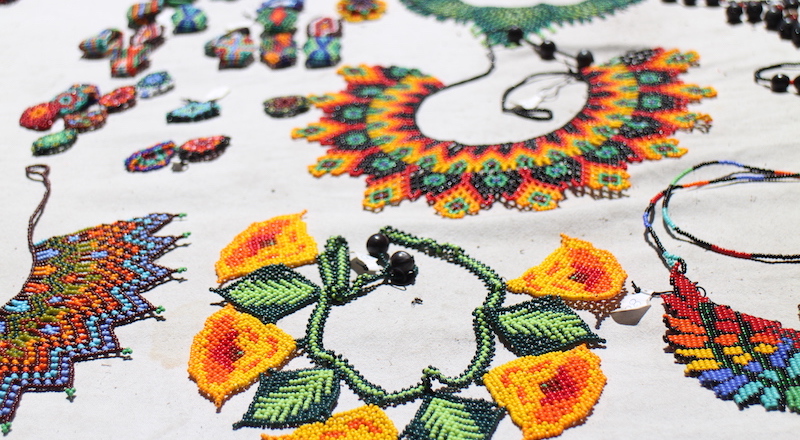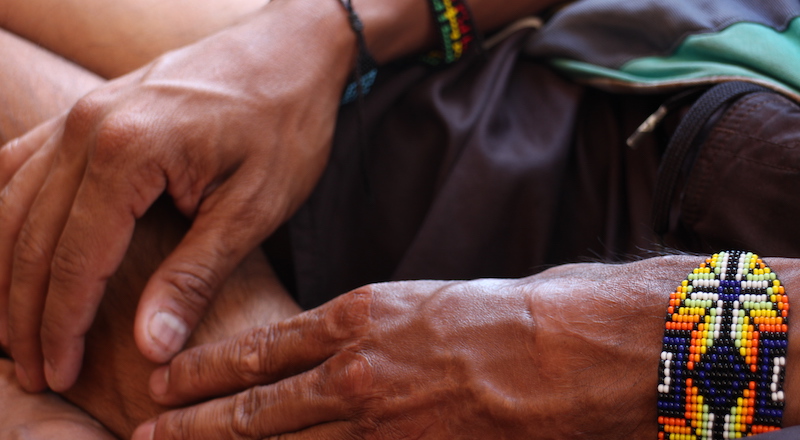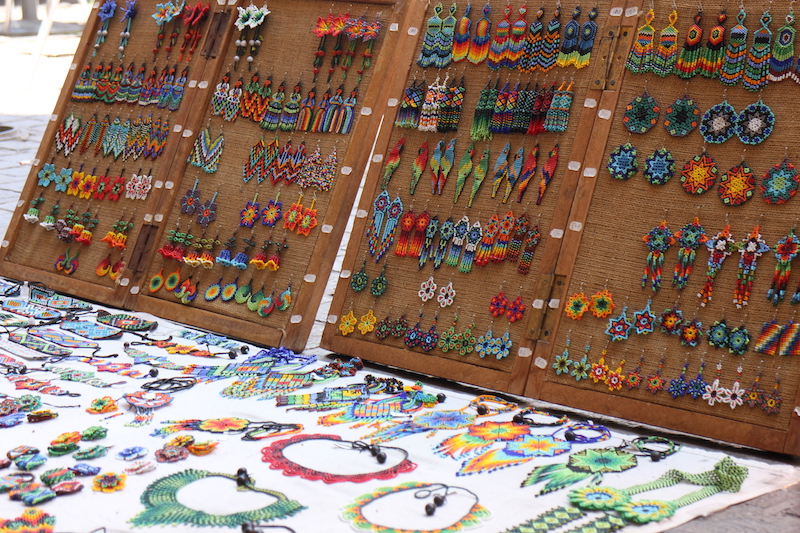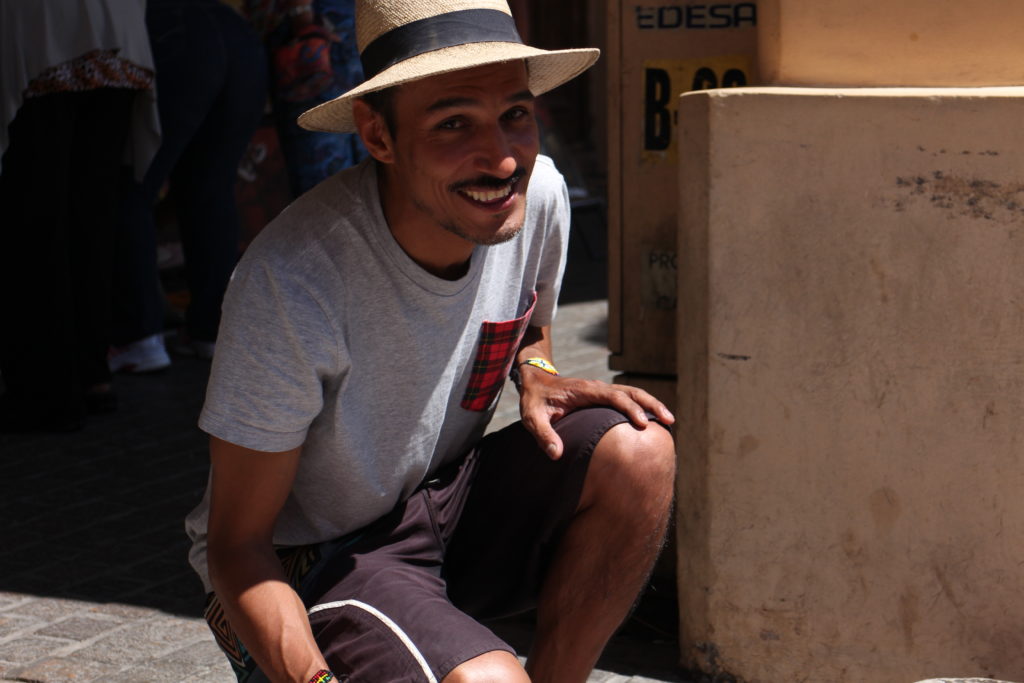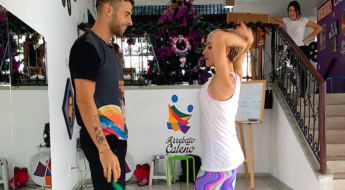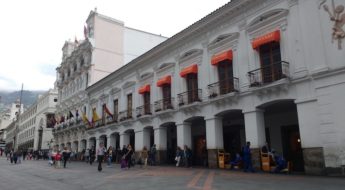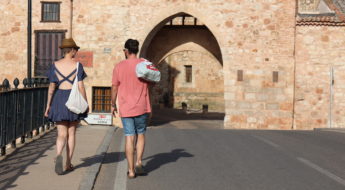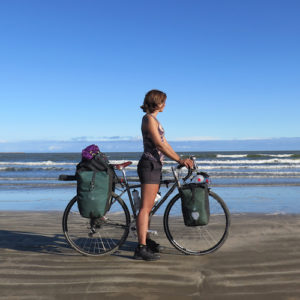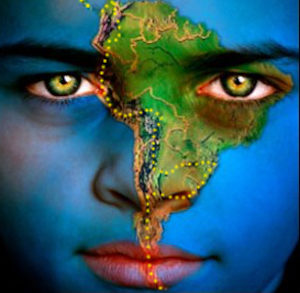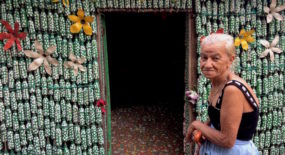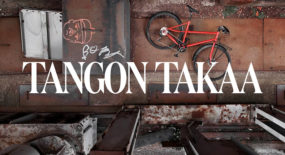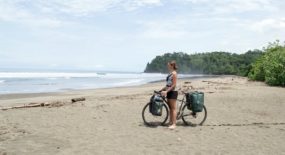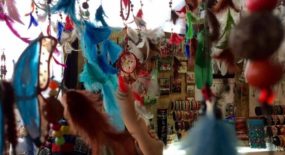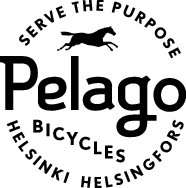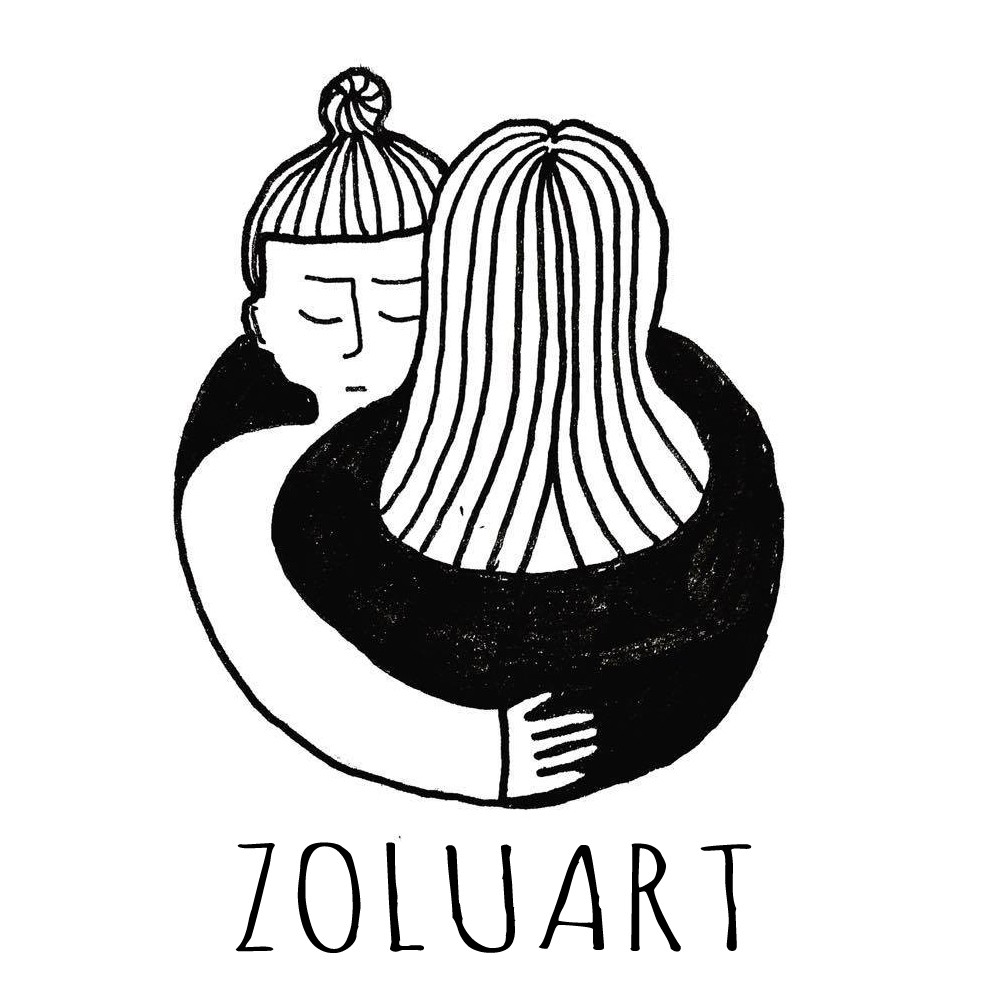INDIGENOUS COLOMBIAN CRAFTS IN SALTA
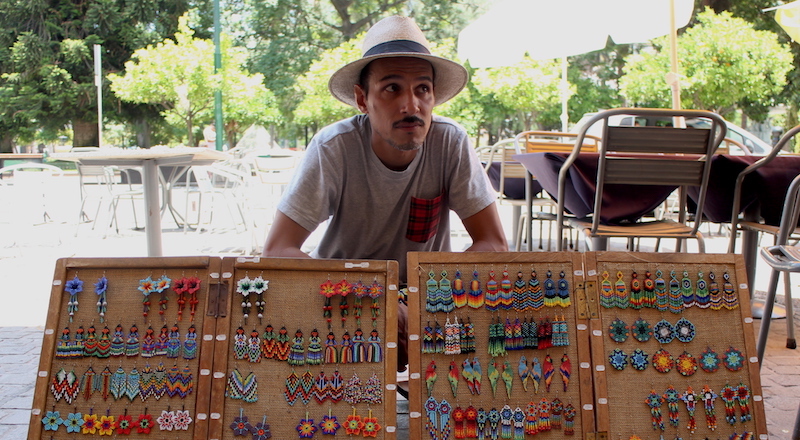
I’ve always been intrigued by individuals living from the streets. Artists, buskers, craftsmen, salesmen, shoe polishers and all those nearly invisible eccentrics for whom the streets represent an endless playground of opportunities. Not only, because there’s usually a lot of “hidden” talent on the streets, but also because people on the streets are the ones who really see it all. Streets are where everything happens.
Nacho is a craftsman who for the past eight years has annually migrated from his home country Colombia to the streets of Salta, Argentina. There, his work day begins the moment he spreads his magnificent pearl necklaces, earrings and rings in front of the Archaeological Museum at Plaza 9 de Julio. He’s not a new acquaintance to me, but this was the first time we actually talked about his work and his life as a “man of the streets”.
Interview with Nacho Cadavid Arroyave
Here’s Nacho answering my questions on his handicrafts and on how it all started. Read also about the future aspirations of this traveling craftsman, who’s not tied up to anything but his own creativity.
Nacho, you’ve been working on the streets for eight years now. How did it all begin?
”Before starting to work as a craftsman myself, I used to buy handicrafts from various indigenous peoples in Colombia, and sell them on to salesmen working at fairs and such. Having done this for over 1,5 years, suddenly one day one of the indigenous ladies invited me to visit their community. This was something I had thought about from time to time, but it’s not custom to invite oneself into a community. No, you have to be invited and so I was. I can still remember the exact words the elderly lady used as she approached me with her proposal: ‘Mi hijo, quieres subir a la tierrita?’ (My son, do you want to climb up to the little land?). Not sure what to expect, I went and stayed at this place called Nusido for two months. There I learned the basics of their indigenous art and when I returned from the community, I knew that was what I wanted to do for a living.”
What was the beginning of your life on the streets like?
”In 2008, soon after returning from the community, I left to travel. My first stop was Ecuador, but there I still had savings, so I worked very little and spent a lot. By the time I got Peru, I was broke. Unfortunately, the handicrafts didn’t sell as well as I had imagined, and so I ended up working at a surf shop on a ridiculously low pay. From there, I managed to travel the continent combining my elementary handicraft skills with all other random jobs I could get. At one point, in Bolivia, I lived for five months on a thousand dollars. Argentina is where I finally realized I needed to start taking the profession of craftsmanship more seriously. I spent endless hours watching youtube tutorials, reading about different patterns and creating a lot of things with the method of trial and error. I improved and consequently also started making more money. As soon as I could afford it, I bought myself a plane ticket home to Medellin. This was in 2012 after four years spent traveling”.
What did you do when you returned home after four years of traveling?
”Upon my arrival in Colombia, I returned to the indigenous community to learn more of the arte embera Katio (the previously mentioned indigenous art). Only then I noticed I had literally been at the verge of mastering the art at perfection, because all I needed was a few more tips and I was ready to be a self-sufficient craftsman. The woman who had initially taught me the basics four years back, now went and explained 2-3 things to me, and suddenly it all just clicked. After that I realized I could replicate and create whichever pearl pattern I saw.”
You’ve established yourself as a self-sufficient craftsman already eight years ago. What do your years look like?
”Since 2012, I’ve divided my year into six months of work, six months of vacation. I usually produce a lot of the things I sell before the high season (as in: the work season), so I mainly concentrate on sales when it’s time to be on the streets. However, I also like to produce things on the street, because it catches people’s attention and makes it easier for them to approach me. They get curious about what I’m doing, which often leads to interesting conversations and sometimes even to sales. However, producing on the streets is slower than at home, because you take breaks to answer questions, you need to keep an eye on police patrols, and also the working position is not the most ergonomic possible.”
Where do you usually spend your six months of vacation?
“I love Colombia, so I usually spend the six working months abroad, and the six months of vacation in my home country. In Colombia, handicrafts are not so much appreciated as in other Latin American countries, so I would’t even bother trying to sell them there. Argentina, on the other hand, is perfect for handicrafts. In fact, it’s maybe the best country for it in whole South America: here, people appreciate manual work and are willing to pay well for it. Some salesmen take advantage of this and ask even more money from tourists, but I’ve always thought my work has a value, and that value is the same for everyone.”
Do you always come to Salta for work?
“I’ve been coming to Salta since 2008. I like it here and I sell very well. With the money I make in Argentina, I can travel half of the year and live on my savings. I can afford to have a car and enjoy life. This year, I also bought a motorcycle and traveled for three months around Colombia. And this May I’m planning to go to Europe, travel around there and possibly buy a motorcycle to go to India. But when I work, I really work: every single day from 9.30am to 8pm. Not really because I have to but because I love being on the streets and talking to people. Besides, what would I do in my hotel room?”
After eight years of working on the streets, what are your thoughts on it?
“There’s nothing I’d rather do and nowhere I’d rather be than on the streets. It’s the best place I can imagine for socializing with people, seeing all layers of society and observing how people interact with each other…It’s like an overview of the society. It’s where you really learn about people and their cultures. It’s the perfect place for me and I wouldn’t exchange this life for anything.”
How I met Nacho?
In December 2015, while on my way through the Argentinian Patagonia, I cycled into the little village of El Bolson, curious to see what the place I had heard so much about was like. In Argentina, El Bolson is known as the paradise of alternative lifestyles or what some might call ”modern hippies”. The mountains surrounding the village are full of self built, organic houses, and the center of the city is packed with buskers and craftsmen who migrate to El Bolson especially during local summer holidays (December to February). In El Bolson, I not only ran into my fellow cyclist, Antti Aittola, but I also bumped into Nacho, who within half an hour taught me to make an easy pearl flower earring. (Those who know me know that for all my life I’ve been quite fanatic about making necklaces and earrings of iron thread and small pearls, so just imagine my enthusiasm at the opportunity of learning something new in this field!)


